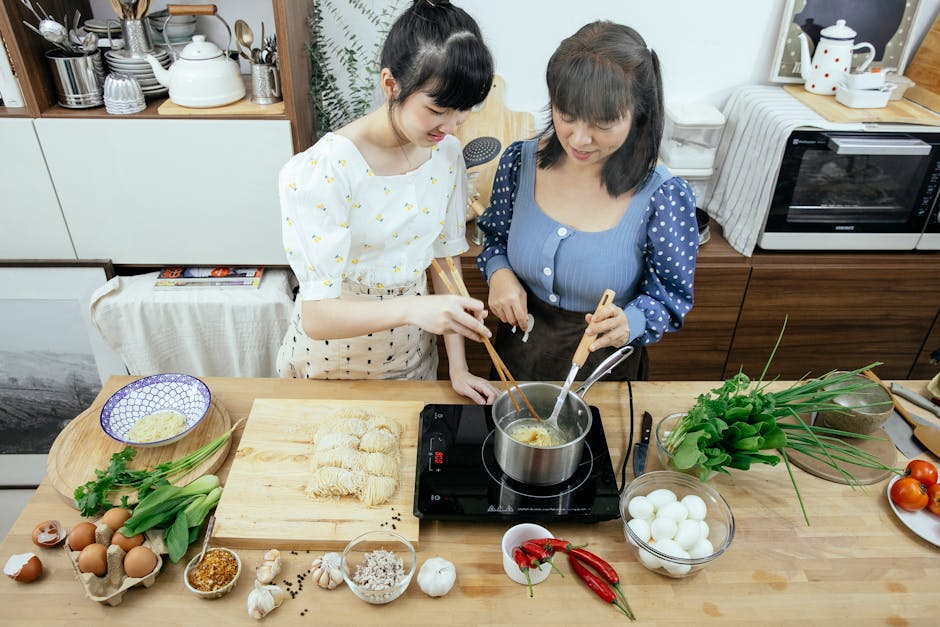Introduction
Let’s face it: peeling a hard-boiled egg shouldn’t be a wrestling match. How many times have you painstakingly tried to peel an egg, only to end up with a mangled mess and half the egg stuck to the shell? It’s frustrating! But fear not, because perfectly peeled hard-boiled eggs are absolutely achievable. This guide will reveal the secrets to consistently creating beautiful, easy-to-peel hard-boiled eggs every single time.
<img src="https://images.pexels.com/photos/5907915/pexels-photo-5907915.jpeg?auto=compress&cs=tinysrgb&h=650&w=940" alt=" A close-up shot of a perfectly peeled hard-boiled egg next to a bowl of mangled, difficult-to-peel eggs.
” style=”max-width:100%; height:auto;” />
The Secret is in the Preparation and Technique
The key to easy-peel hard-boiled eggs isn’t just one thing, but a combination of factors. From choosing the right eggs to the precise cooking method and the all-important ice bath, mastering these techniques will transform your hard-boiled egg experience.
Choosing Your Eggs: Older is Better
Believe it or not, the age of your eggs matters! Fresh eggs are notoriously difficult to peel because the egg white (albumen) is more tightly bound to the inner shell membrane. Older eggs, on the other hand, tend to peel much more easily.
- Ideally, use eggs that are at least a week old.
- Check the “sell-by” date on the carton – the further away the date, the fresher the eggs.
- If you’re unsure, you can test an egg’s freshness by placing it in a bowl of water. A fresh egg will sink and lie flat, while an older egg will stand on one end or float.
<img src="https://images.pexels.com/photos/7726468/pexels-photo-7726468.jpeg?auto=compress&cs=tinysrgb&h=650&w=940" alt=" A side-by-side comparison of a fresh egg sinking in water and an older egg standing on one end.
” style=”max-width:100%; height:auto;” />
The Perfect Cooking Method
There are a few methods for cooking hard-boiled eggs, but we’re going to focus on a method that promotes easy peeling: the “steam and simmer” method. This method helps to gently cook the eggs and create a small gap between the egg white and the shell membrane.
- Place eggs in a saucepan: Gently arrange the eggs in a single layer in a saucepan.
- Add cold water: Cover the eggs with about an inch of cold water.
- Bring to a boil: Bring the water to a rolling boil over high heat.
- Cover and remove from heat: Once boiling, immediately remove the pan from the heat, cover it tightly with a lid, and let it sit for 12-14 minutes (depending on your desired yolk consistency).
- Prepare an ice bath: While the eggs are cooking, prepare an ice bath by filling a bowl with ice and cold water.
<img src="https://images.pexels.com/photos/31418923/pexels-photo-31418923.jpeg?auto=compress&cs=tinysrgb&h=650&w=940" alt=" A photo sequence showing the steps of the steam and simmer method, from adding water to the saucepan to preparing the ice bath.
” style=”max-width:100%; height:auto;” />
The Ice Bath is Crucial
This is where the magic happens! Plunging the hot eggs into an ice bath immediately stops the cooking process and causes the egg white to contract slightly, further separating it from the shell membrane. This makes peeling *much* easier.
- Transfer eggs immediately: As soon as the timer goes off, carefully transfer the eggs to the prepared ice bath using a slotted spoon.
- Let them sit: Let the eggs sit in the ice bath for at least 15 minutes. The colder the eggs, the easier they’ll peel.
<img src="https://images.pexels.com/photos/5908225/pexels-photo-5908225.jpeg?auto=compress&cs=tinysrgb&h=650&w=940" alt=" Eggs submerged in an ice bath with plenty of ice cubes visible.
” style=”max-width:100%; height:auto;” />
The Peeling Technique
Now for the final step: peeling. Even with the best preparation, a little technique can make a big difference.
- Crack the shell all over: Gently tap the egg all over on a hard surface to create small cracks in the shell.
- Peel under cold running water: Submerge the egg in cold running water as you peel. The water helps to lubricate the shell and ease it away from the egg white.
- Start at the larger end: The larger end of the egg often has a small air pocket, which makes it a good place to start peeling.
<img src="https://images.pexels.com/photos/3805539/pexels-photo-3805539.jpeg?auto=compress&cs=tinysrgb&h=650&w=940" alt=" A close-up shot of hands peeling a hard-boiled egg under running water.
” style=”max-width:100%; height:auto;” />
Conclusion
Mastering the art of perfectly peeled hard-boiled eggs is within your reach! By using slightly older eggs, employing the steam and simmer cooking method, shocking them in an ice bath, and using the proper peeling technique, you can say goodbye to frustrating peeling experiences. Enjoy your perfectly peeled eggs in salads, as a snack, or deviled!
<img src="https://images.pexels.com/photos/3805539/pexels-photo-3805539.jpeg?auto=compress&cs=tinysrgb&h=650&w=940" alt=" A collage of various dishes featuring perfectly peeled hard-boiled eggs, such as deviled eggs, egg salad, and salads with sliced eggs.
” style=”max-width:100%; height:auto;” />
